Wildlife at Penguin Court
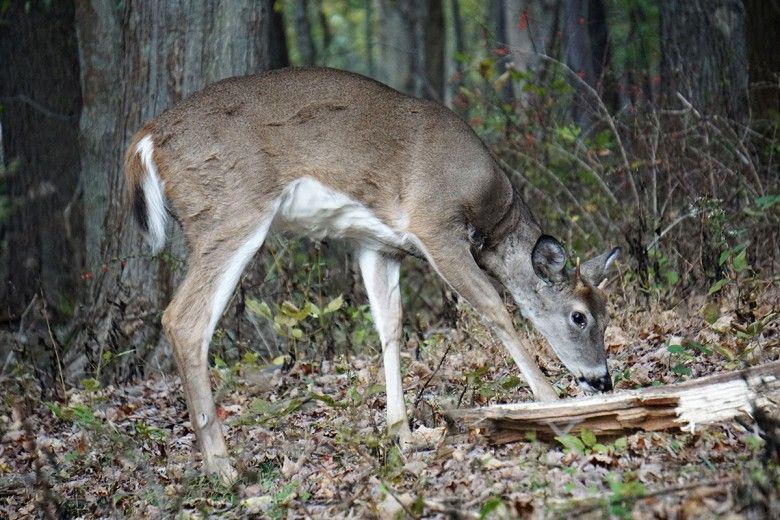
Boasting 923 forested acres in the Laurel Highlands, the Brandywine Conservancy's Penguin Court Preserve is home to a rich diversity of wildlife. In the below blog, Penguin Court's program manager, Melissa Reckner, highlights some of her favorite sightings, from bears to birds and everything in between.
After recently downloading images from a couple of trail cameras and inspired by our 2015 blog, “Encounters with Local Wildlife: Animals we see on Brandywine Conservancy Protected Lands,” written by the Brandywine Conservancy’s Kristen Frentzel, I thought it would be nice to share a few wildlife sightings from Penguin Court, the Conservancy’s preserve in Westmoreland County, PA that it acquired in 2015.
Despite its name, there are no penguins at Penguin Court! The Scaife family, which originally owned the land, did have African penguins on the grounds in the 1940s or 1950s, but those penguins are long gone and all that remains are their stone “igloos” and penguin sculptures.
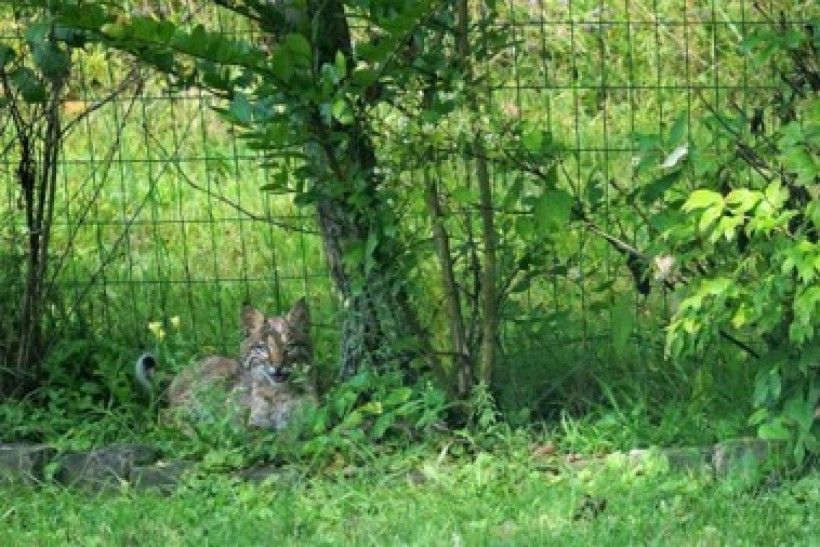
Penguin Court has a lot of native wildlife about which to get excited! Mr. Richard Scaife, who donated the property to the Brandywine Conservancy, wanted the land conserved for its wildlife and conservation values, hence, Penguin Court is operated as a private preserve. It is only open to the public during special programs for which attendance is limited, due to space restrictions. This allows wildlife to get comfortable within Penguin Court’s 923 acres in the Laurel Highlands.
White-tailed deer are the most regular sightings, and even though they are so common, one has to pause and watch them—even if for a moment. From does and their fawns to antlered bucks, deer are a staple of Penn’s Woods and Penguin Court.
American black bears are always a treat to see, and I doubt I will ever stop marveling at how these large mammals can traverse the forest so silently or hide their jet-black bodies so well! Some years yield more bear sightings than others, but we’re confident that Penguin Court is home to a healthy bear population.
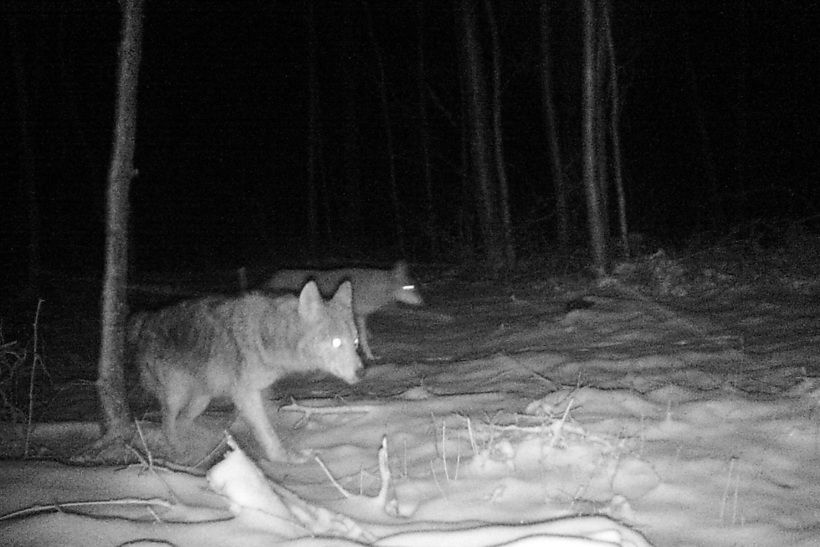

Coyotes come and go, with some individuals a little bolder than others. Occasionally, one can hear them yipping and howling in the valleys, which never ceases to widen one’s eyes. As highly adaptable omnivores, coyotes can eat both plants and animals and undoubtedly feed upon the mice, rabbits, birds, and even reptiles and amphibians that reside at Penguin Court.
Speaking of reptiles and amphibians, staff has spotted the following at Penguin Court:
- Dekay’s brown-snakes
- Eastern rat snakes
- Garter snakes
- Northern ring-necked snakes
- Northern water snakes
- Red-bellied snakes
- Timber rattlesnakes
- Eastern box turtles
- Snapping turtles
- American bullfrogs
- Eastern American toads
- Green frogs
- and a variety of salamanders.

I suspect there are many more herpetofauna species for us to uncover at Penguin Court!
Eastern gray squirrels, flying squirrels, fox squirrels, red squirrels, and Eastern chipmunks are also frequently seen. Wild turkeys and the common raccoon are fairly regular sightings, as well. North American porcupine, gray and red fox, Virginia opossum, and bobcats are less common, but a delight to spy, even if just on a trail camera.
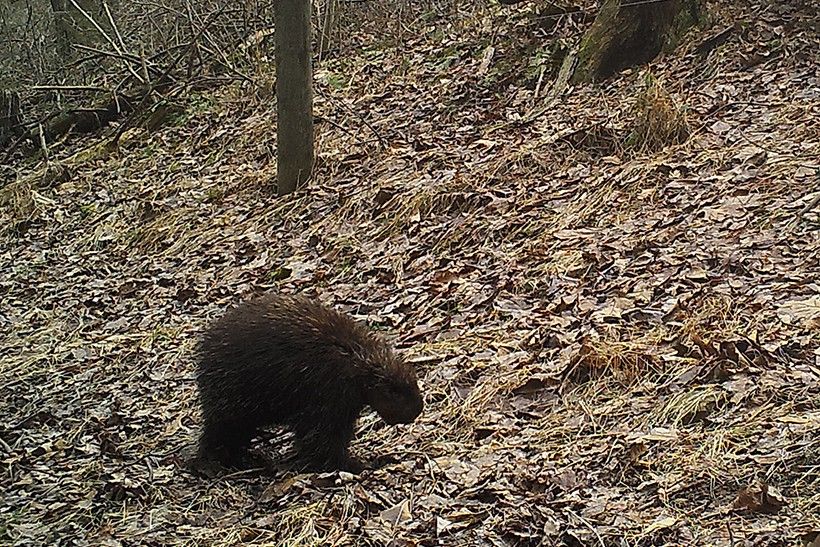
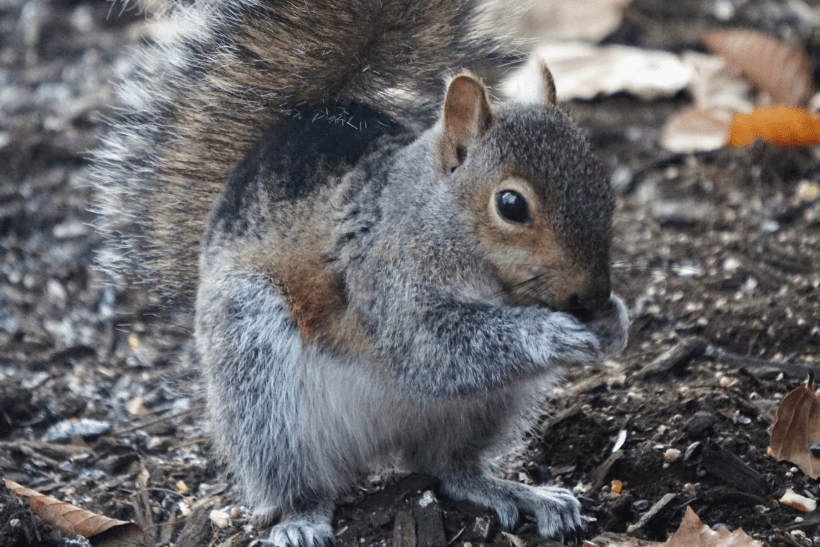
Eighteen bird species were documented at Penguin Court during the recent Christmas Bird Count on December 16, 2023. You can view the full list here. Additionally, through casual observations, staff and guests have also noted the following bird species on the property:
- Acadian flycatcher
- American robin
- Bald eagle
- Barred owl
- Canada goose
- Cedar waxwings
- Eastern kingbird
- Eastern phoebe
- Eastern screech owl
- Eastern towhee
- Great horned owl
- Hooded warbler
- House wren
- Indigo bunting
- Mallards
- Mourning dove
- Northern cardinal
- Northern flicker
- Ring-necked pheasant
- Saw whet owl
- Scarlet tanager
- Sharp-shinned hawk
- Tree swallow
- Turkey vulture
- Yellow-bellied sapsucker.
Of course, the native plant gardens, meadows, and woods support a great diversity of insects, too!
I’m eager to document more species at Penguin Court and implement best management practices to sustain healthy ecosystems and ensure their success. Natural areas serve so many purposes, and it’s nice to focus on wildlife needs. Rachel Carson said, “Like the resource it seeks to protect, wildlife conservation must be dynamic, changing as conditions change, seeking always to become more effective,” and Brandywine Conservancy is committed to that.
For more information on Penguin Court, click here.
Photos by Melissa Reckner